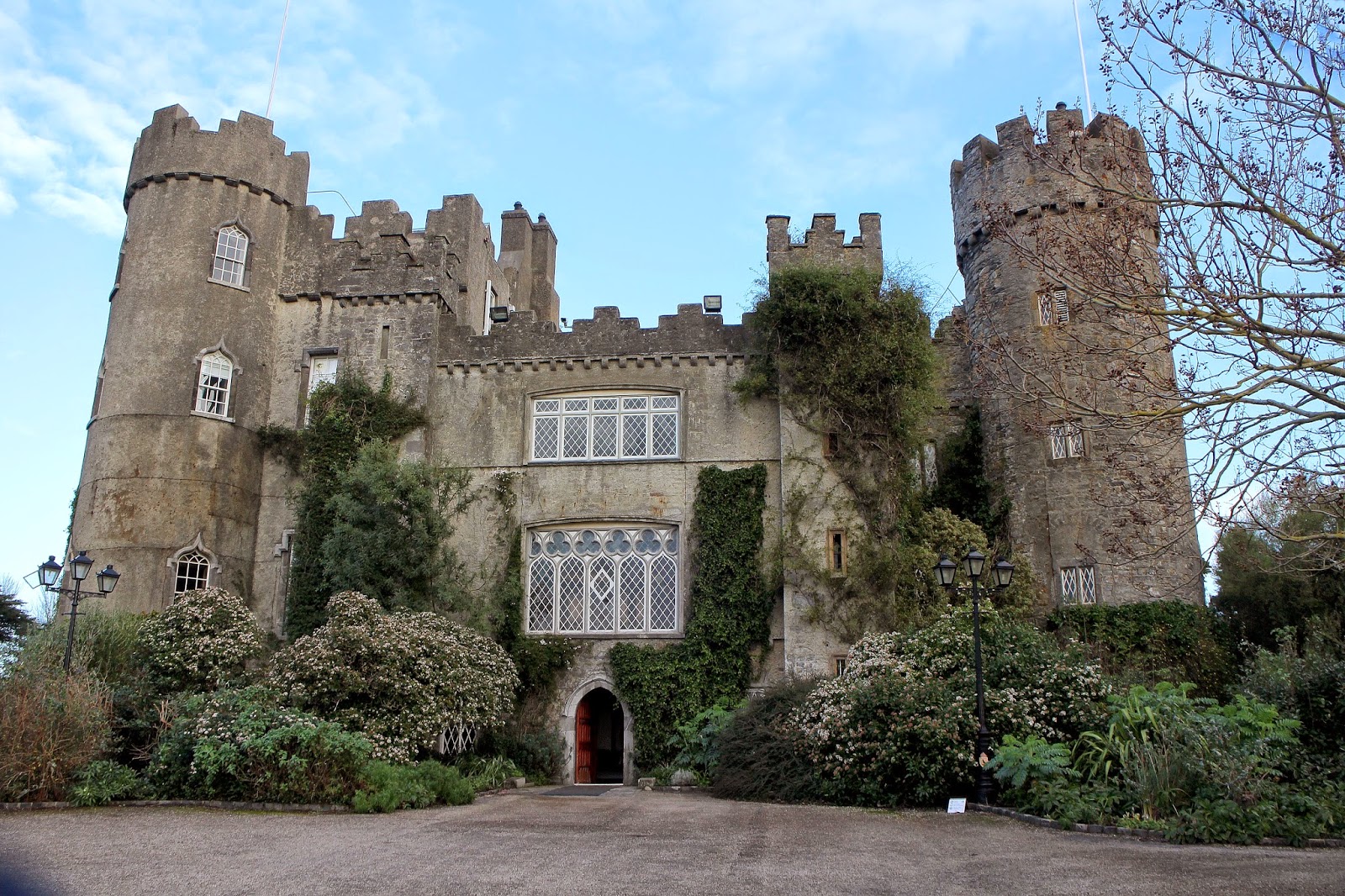Two Towns
linked by
Treachery
An innocent visit to a church in Hastings, England
drew Pat Keenan into a web of political and religious conspiracy,
of plots, lies, imprisonment and executions linking
that English town and a town in north county Dublin.
Photos, map and chart by Pat Keenan
Titus Oates born in Hastings, Sussex, England in 1649, became an Anglican vicar, oddly became a Catholic for a while, and then went on to become a serial perjurer and the infamous fabricator of a conspiracy theory that gripped England for at least ten years and maybe a lot longer. It was known as the Popish Plot, a supposed Catholic/Jesuit plot to kill King Charles II of England, Scotland and Ireland. It landed both of them, and many more in prison.
 |
| Peter Talbot's home: Malahide Castle, Co.Dublin Photo: Pat Keenan |
 |
| All Saints Church, Hastings: where Titus Oates was baptised and his father was rector Photo: Pat Keenan |
| All Saints Church: where Titus Oates father was rector.Titus managed to appoint himself as his father's curate Photo: Pat Keenan |
Across the way from the church is Torfield Cottage (at 88 Old London Road) where Titus Oates lived for a time.
 |
| Torfield Cottage, Old London Rd, Hastings: perjurer Titus Oates lived here Photo: Pat Keenan |
 |
| Peter Talbot: photo by Pat Keenan detail of a painting in Malahide Castle with permission from The National Gallery of Ireland |
Factions in the Royal court were never happy with Talbot and particularly his influence with the king and at one point he and the Jesuits were accused of conspiring to kill the Duke of Ormond. He was forced to resign his position and retired to the Continent. However he later returned to England having severed his connection with the Jesuits and back in Ireland, was appointed Archbishop of Dublin in 1669.
Enter Oliver Plunket, appointed Archbishop of Armagh and Primate of Ireland the same year and so began an embittered rivalry as to whether Armagh or Dublin should be the ecclesiastical centre for Ireland. The Pope had to intervene and decided in favour of Armagh. But between the two bishops the issue continued to fester and was never reconciled. Talbot now began to pressure England to redress some of the grievances of Catholics in Ireland.
Protestants in Ireland, alarmed by Talbots closeness to Charles and the prospect that the balance of power in Ireland might shift to the Catholic majority, protested vigorously resulting in even more oppressive laws against Catholics. Talbot again was forced into exile in Paris.
 |
Time scale: Talbot, Plunkett, Oates, Charles II, Cromwell in Ireland and the time span covering the 'Popish Plot' period Compiled by Pat Keenan |
 |
An engraving of a pilloried Titus Oates from Robert Chambers'Book of Days |
Oliver Plunkett was hanged, drawn and quartered at Tyburn (current location Marble Arch, junction of Oxford Street, Park Lane, and Edgware Road, London) 1681; was buried in two tin boxes in the courtyard of St Giles in the Fields Church, 60 St Giles High St, London WC2 , England; was exhumed in 1683 and moved to the Benedictine monastery at Lamspringe, Hildesheim, Germany but later most of his remains were removed to Downside Abbey, England - some parts remain at Lamspringe.; his head was taken to Rome, then back to Ireland, first to Armagh and then in 1921 to Saint Peter's Church, Drogheda, Co. Louth where it is preserved in an glass fronted shrine at the altar. www.saintoliverplunkett.com/stpeters.html
When he was canonized a saint in 1975 bits of his body (relics) were dispatched to Ireland, England, France, Germany, the United States and Australia.
.jpg) |
| A detail fron a portrait of King Charles II by John Michael Wright |
Titus Oates: died in July, 1705 and it is not known where he was buried.
Travel File:
Aer Lingus (www.aerlingus.com) and Ryanair (www.ryanair.com)
fly direct from Dublin to London Gatwick
Ryanair fly direct from Cork to London Gatwick
Ryanair fly direct from Shannon to London Gatwick
Aer Lingus fly direct from Knock to London Gatwick
EasyJet (www.easyjet.com) and Aer Lingus fly direct from Belfast to London Gatwick
Southern Railways (www.southernrailway.com) have a service from Gatwick Airport to Hastings (the final destination is the next station: Ore) with a £24 return (2014) off-peak fare.The return can be used anytime within a month from purchase
Tourist Information:
www.visit1066country.com
 |
| Hastings Old Town Map Map by Pat Keenan |